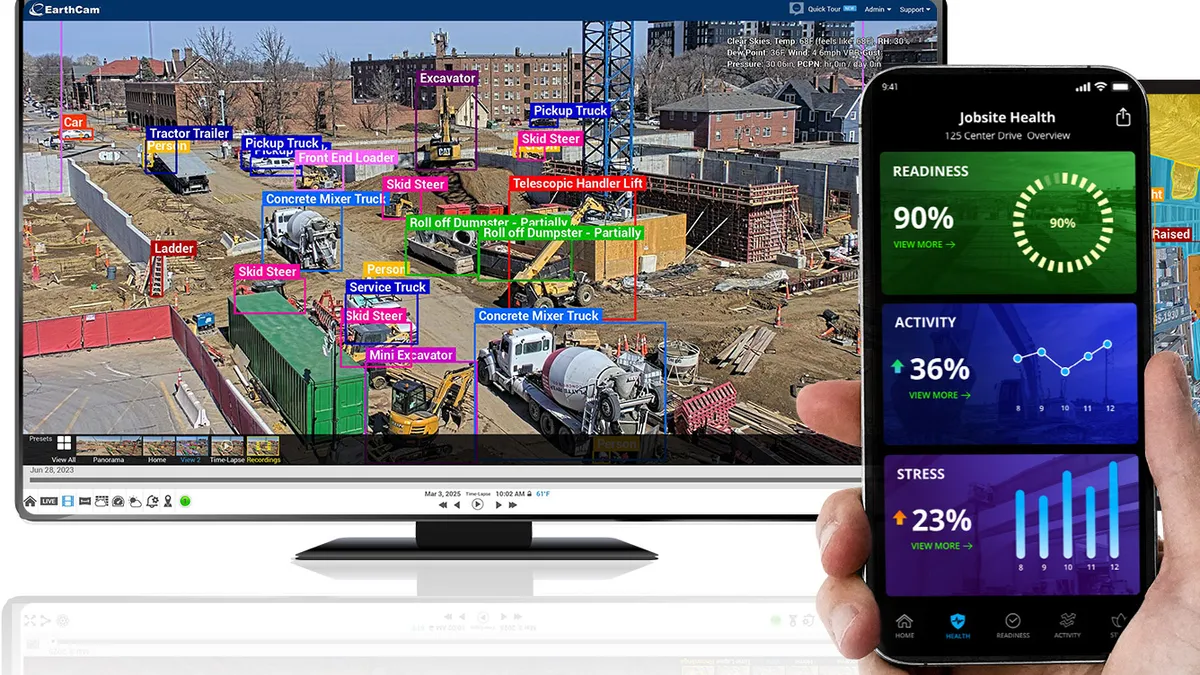The construction industry, once notoriously slow to adopt new technology, is now host to a virtual parade of new software, apps and other connected devices like drones and laser scanners. Contractors are also demanding enhanced functionality and insisting that their most useful tools be able to communicate and work together.
What’s been happening
Software providers like Procore and Autodesk might be the busiest as far as construction-related integrations are concerned.
“There's a ton of fragmentation [in construction technology],” said Josh Cheney, construction technology industry manager at Autodesk, “and I really think that integrations are an opportunity to limit some of that fragmentation or at least continue to break down the data silos that are created by stand-alone solutions.”
Autodesk’s cloud-based construction management software BIM 360 allows contractors and their customers to connect information and workflows through integrations with almost 80 other solutions through easy access to APIs and the company’s Forge development platform.
Thus far, third-party providers like Bluebeam, Daqri, eSub and SmartBid have taken up Autodesk on its open invitation to connect, giving BIM 360 users dashboard access to some of the most popular tech tools in the industry.
Integrations, Cheney said, typically have two drivers. One is that a third-party provider wants to grow its business, taking advantage of Autodesk’s global reach, or one of its customers is already using BIM 360 and wants to be able to use the two tools together.
Autodesk also seeks out strategic partners. The company announced its acquisition of construction document management solution PlanGrid last year and will integrate the wildly popular tool with BIM 360.
Procore Technologies’ Project Management software has integrated with many of the same solutions that Autodesk has, and its list has now grown to more than 140, including 16 ERP systems. This is a far cry from the 15 or 20 integrations the company was running when Kris Lengieza, director of marketplace business development, joined Procore a little less than a year ago.
What contractors are realizing, he said, is that there are valuable tools out there — beyond the solutions they’ve decided on as their “central hub” — that can support different workloads within their companies while feeding off the same data, like project management and accounting systems. And they want to be able to access those tools in one place.
A champion of integration is Andy Leek, vice president of technology and innovation at St. Louis general contractor Paric Corp. Leek has invested considerable time in developing an integration strategy for Paric and finding partners that can help the company meet its tech goals.
All but a few of these partnerships, Leek said, started with a cold call from him and with a request that they be willing to work with him on an integration with BIM 360.
Companies that are interested in doing the same, he said, should do so knowing that they will have to invest time and money in the necessary software services, testing and employee training.
At the end of the day, though, all of that hard work has left Paric with a one-stop, multiple-discipline environment that all project stakeholders can tap into in order to access the information most important to them.
Russ Dalton, AECOM's BIM director for the Americas, said the company has its own integration processes into common data environments like BIM 360, so any vendor that wants to collaborate has to accommodate the way AECOM already works. All the while, AECOM filters those offers, trying to determine the potential gap in the company’s processes that would make the integration helpful.
AECOM’s ability to test on such a large scale was also instrumental, he said, in helping Autodesk flesh out the current version of BIM 360. “Not many firms can offer that — the sheer amount of people working in the model,” Dalton said.
On the vendor side, Leek said, the unwillingness to integrate with other platforms could be a deal breaker unless the software is “amazingly special” enough to warrant an exception.
“But," he said, “I have run into very few vendors who had no interest. And if they had no interest at all, it was more that they just weren’t even aware that [such a collaboration] was possible.”
Not every situation is right for integration though, Dalton said, like standard accounting programs or other financial software. “That will be standalone,” he said. And not only large companies can take advantage of integration.
“I think for a smaller contractor,” Lengieza said, “these integrations are even more important than they are for some of the bigger contractors. Many of them don't have IT departments. Many of them don't have back office staff. So a project manager at a $5 million to $10 million a year or smaller general contractor — he or she needs as much help as they can absolutely get."
The more seamless an experience they can have, he said, the easier their projects are likely to go for them, which increases their chance of success.
The pace of integration
Could integrations be coming at such a fast pace these days that it's too much for contractors to handle? The answer is no, Cheney said. “[Even though] it feels like there is a new construction management application popping up every day,” he said, “I think anyone would say that the pace is probably not fast enough."
At the top line of the industry, Lengieza told Construction Dive, companies like Procore can’t integrate fast enough to keep up with contractor requests.
The future of integration
The future is all about evolving with technology, Leek said. “Whether it's software or … a nail gun or a crane … or whatever," he said, “you don't build the same way you did 50 years ago. They all go vertical, but the way you do it today is a lot different.”
And software companies that are willing to evolve and integrate, Cheney said, stand a better chance at achieving success. “I think the long-term value of an integrated product has a much longer lifecycle than a product that doesn’t.”
“I can't see it slowing down much,” Lengieza said. “We're seeing contractors becoming more and more educated on this.” In addition, he said, there will likely be more vertical integration up and down the supply chain of construction beyond the horizontal movement between internal company systems, which the industry sees so much of now.
Cheney said he hopes that software companies continue to look at the software integration environment in terms of what customers are asking for first and then try to figure out how to make money on top of that.
Regardless, Leek said, integrations will continue to up the cool factor of managing a project. “'Cool' is not a business thing – I’ve been told that 100 times,” he said. “But when you look at these dashboards, or you slap on a VR headset, or you work through the drone data and you're making decisions on where you're going to stage material on a jobsite or where your crane route's going to go or where you're going to do excavation that day, and you're using real time data that used to be reserved for Google Earth, but it's your data, and it's your design … that’s cool.”






















